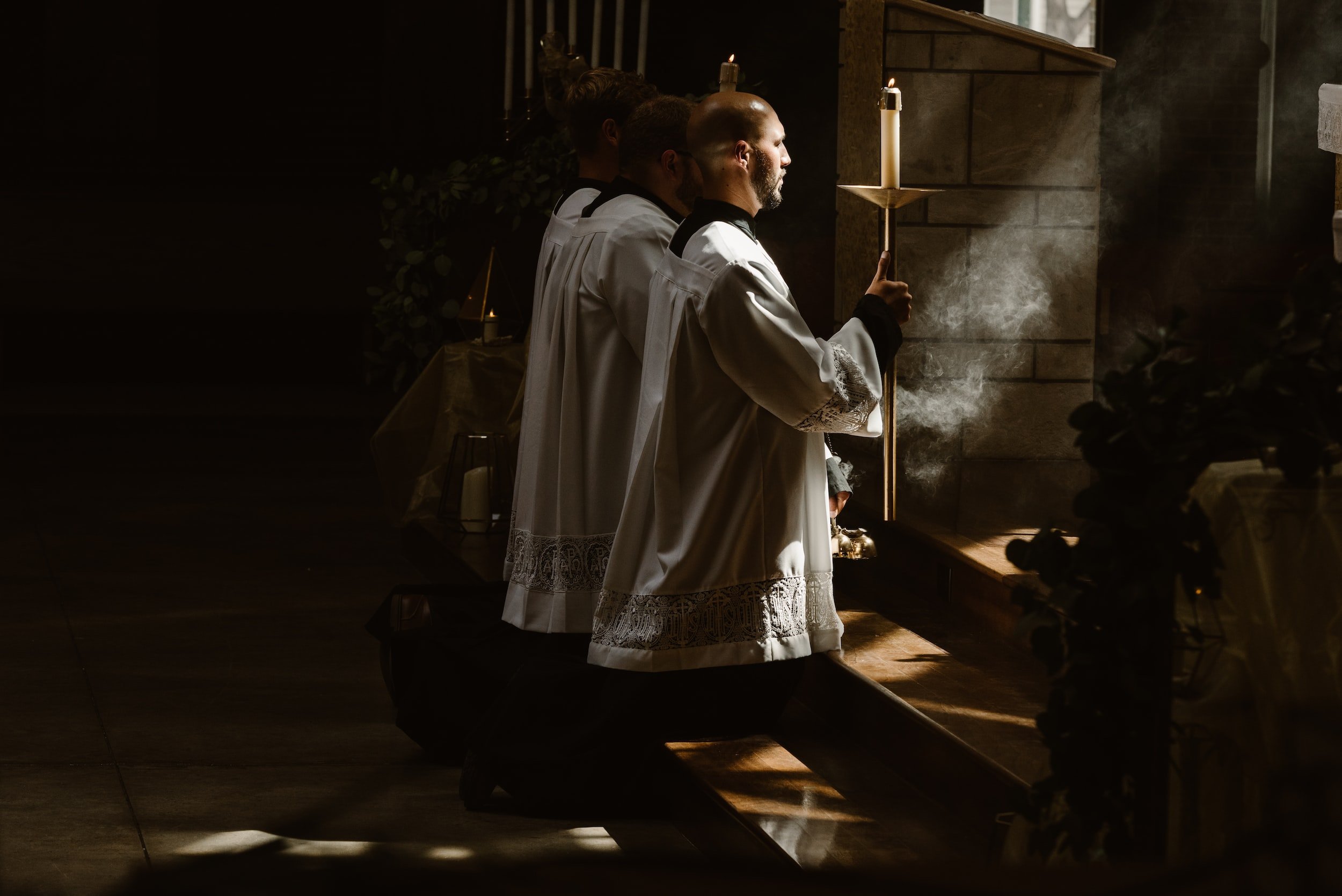The Rite of Exorcism is over 1,700 years old. It is a sacramental, which is anything that is set apart or especially blessed by the Church. The Rite is the Church's official method of ordering a demon in the name of Jesus Christ, with the full authority of the Church, to leave a possessed person, place, or thing. It is reserved for cases of full possession only, although there are some cases where it is used over a property or region under the Devil's power.
The authority of the Rite comes from the Catholic Church itself, not the individual Christian's Baptism. Only a priest who has been given express—or written—permission (called “faculties”) by his bishop may conduct the Rite of Exorcism. Centuries ago, the Church, in her wisdom, decided to restrict this type of prayer, which addresses cases of full possession, in order to protect the faithful from the power of the Devil. At that time, untrained laymen were getting involved in direct battle against the Evil One. The ecclesial authorities realized that, without proper training, this was (and still is) extremely dangerous, not only for the individual saying the prayers, but also for the possessed victim. This is why the Church restricted the Rite. It is very important that we, as laymen, always operate within the Church's authority and obey the regulations of the Church. These rules are like lines on a highway: if we stay within them, chances are we won't get in a (spiritual) wreck. (This is also an important reason why even saying deliverance prayers over others without any formal training can be very dangerous. If you have not been directly mentored by an experienced counselor, do not start-up your own deliverance ministry! You will be headed towards disaster.)
Fr. Chad Ripperger, an exorcist from Oklahoma, has likened his priestly duty as an exorcist to “being on the receiving end of a sewer pipe.” He says in one of his public speeches, "Being an exorcist is largely being a soldier in combat and an expert torturer. [The exorcist is] trying to cause the demon a measure of pain so that they finally fess up what they’re hiding.” The goal of an exorcism, he goes on to say, is to “get the demon under your thumb so that he will be forced to tell you how to get him out.” The exorcist accomplishes this by getting the demon’s name and ascertaining its particular kind (i.e., lust, impurity, pride, sloth, etc.). “Once you find out the demon’s weakness, you hammer him there.”
It is important to understand that Christ Himself predetermines to what extent the demon can possess the person (i.e., what body part, what powers they can manifest, etc.). Christ only allows demons to affect you to the degree that will be most beneficial to you spiritually. For example, some people are possessed but are extremely holy because they have accepted it as a Cross that Christ has asked them to bear. Remember: Christ is in full control.
Again, the Sacrament of Reconciliation is greater than the Rite of Exorcism, which is just a sacramental: the quiet is greater than the spectacular or loud.
